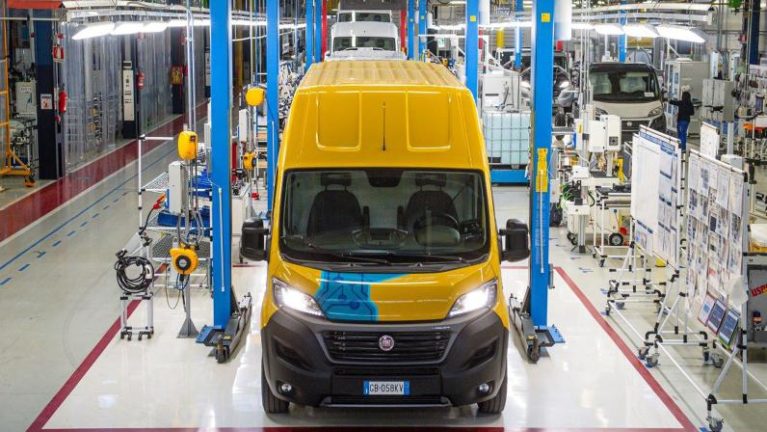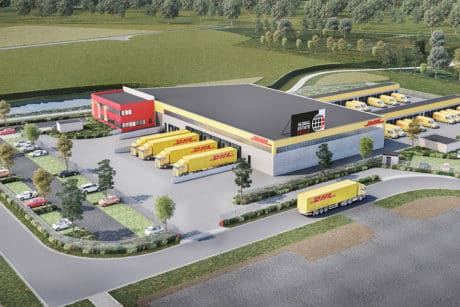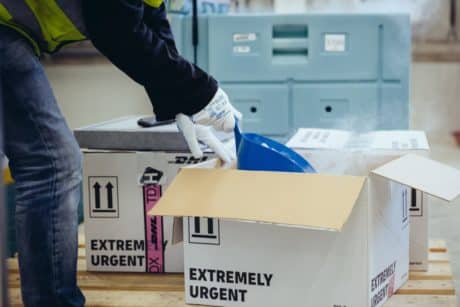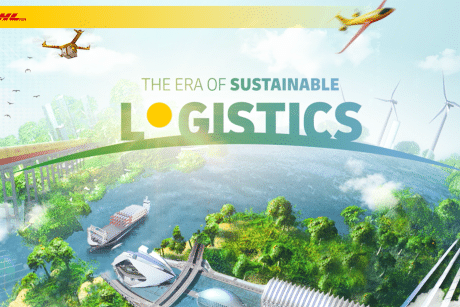- DHL Express purchases 100 of the first Fiat E-Ducato vans for its European fleet
- Next step towards achieving the goal to electrify 60% of the fleet by 2030
- Ambitious plan to add more than 14,000 e-vehicles in delivery fleet across Europe
We have taken another step, as the global leading Express service provider, in our strategy for Zero Emissions. We proudly announce our partnership with Fiat Professional and have already purchased the first 100 units of Fiat’s new E-Ducato. The automotive company introduced the new model to the public on the 22 of April 2021. These large vans are 100% electric and convince with their large capacity and long life battery. The E-Ducato is great for last mile logistics. It has a range of more than 200 km. We plan to have more than 14,000 electric vans in operation in Europe by 2030 to reduce carbon emissions.
The future of last mile logistics is electric
“We strongly believe that the future of last mile logistics is electric”, says Alberto Nobis, CEO DHL Express Europe. “To connect people and to improve lives, we have committed to get greener and cleaner every single day. By adding the E-Ducatos to our fleet, we take the next important step to reach our goal of electrifying the major part of our last-mile delivery fleet. With Fiat Professional, we found what we were looking for: state-of-the-art technology and powerful batteries which enables us to reach beyond 200 km with one charge to deliver our customers their Express shipments – fast and green.”
Large demand for international Express deliveries
We connect consumers and businesses in more than 60 European countries and territories. We use a pickup and delivery fleet that consists of around 500 electric vans. We are mainly operating in urban regions, with 14,000 non-electric vehicles today. Due to the high customer demand for international Express deliveries, we except that European last-mile fleet will grow approximately to 20,000 vans by 2030. We are strongly committed to realise 60% of our fleet to operate electric. We want to reach this goal by end of this decade (approx. 14,000 vehicles) to transform our sustainability strategy into reality.
We use a majority are large vans for urban and metropolitan deliveries. Together with Fiat Professional, we trialed the E-Ducato through tests under different real-world operating conditions. For example very low temperatures, extreme slopes, and long distances. We wanted to check its response to the whole range of DHL usage patterns.
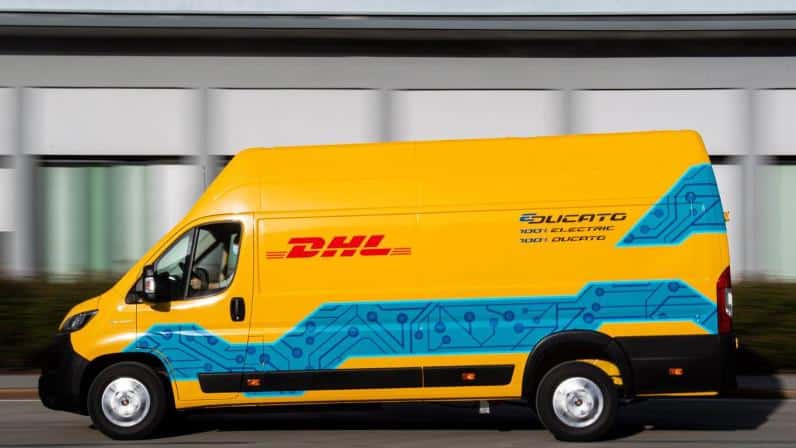
Sustainable E-Ducato is important part of a greener future
For Eric Laforge, Head of LCV Enlarged Europe at Stellantis, the E-Ducato project is a journey towards innovation and the future: “We’re proud that a player as important as DHL Express has chosen the E-Ducato as part of such an ambitious goal. With the E-Ducato, our task was not only to develop a sustainable product from both an economic and environmental perspective, but most of all to provide a complete mobility solution for our partners.”
DHL Express partners with Fiat for a strategic evolution. We want to offer CO2-free delivery to customers. We already use cargo bikes in cities like Barcelona, Copenhagen, Frankfurt and Antwerp. Even in London and Amsterdam, we’re making changes. Our distribution facilities in these cities are connected via boat. This reduces inner city traffic and CO2 emissions.
In addition to the vehicles itself a totally electric mobility chain needs comprehensive area-wide charging infrastructure. We are planning to expand our charging network. We’re collaborating with specialized companies. Our goal is to increase Europe’s charging points significantly in the coming years.
Sustainability roadmap
The electrification of last mile logistics is one of the main pillars of DPDHL Group’s recently announced Sustainability roadmap. The Group is investing a total of 7 billion euros (Opex and Capex) by 2030 in measures to reduce its CO2 emissions. In addition to the electrification of the vehicles, the funds will go in particular towards sustainable aviation fuels and climate-neutral buildings. On the way to the zero emissions target by 2050, which has already been in place for 4 years, the company is committing to new, ambitious interim targets. For example, as part of the renowned Science Based Target Initiative (SBTi), Deutsche Post DHL Group is committed to reducing its greenhouse gas emissions by 2030 in line with the Paris Climate Agreement.
Want to learn more about our green ambitions? Discover DHL GoGreen.
Already a DHL business customer? Start shipping now.

